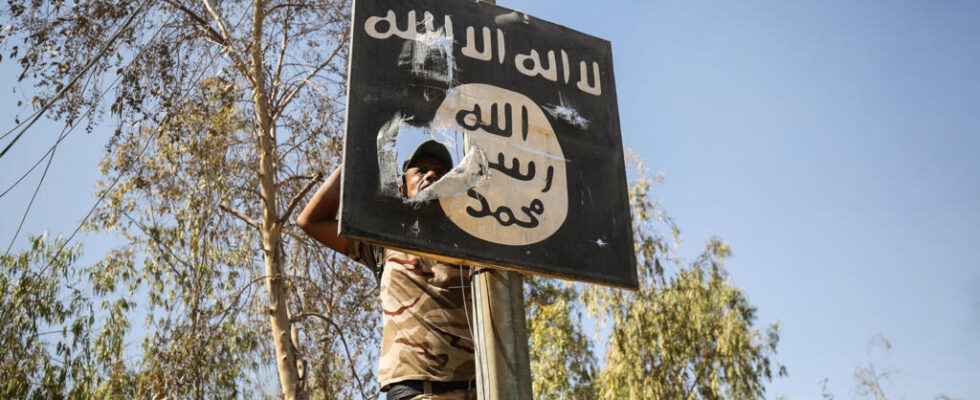In Iraq, a mass grave containing the remains of 139 victims of the Islamic State group was exhumed in the Tal Afar region, near Mosul, on Sunday, July 14. The victims, mainly Yazidis and Shiite Turkmen, had been thrown into a natural well by the jihadists between 2014 and 2017.
2 min
A hundred victims of the Islamic State group (EI) were exhumed from a mass grave in Iraqofficials confirmed to AFP on Sunday July 14, as the authorities have been continuing their laborious search for years to find the mass graves dug by the jihadists.
The natural well Alo Antar, into which the jihadists threw their victims – notably Shiite Yazidis and Turkmen – is located in the Tal Afar region, 70 kilometres west of the metropolis of Mosul, the former “capital” of the Islamic State organisation in northern Iraq.
” The remains of 139 victims were removed, along with human body parts. “, specified to AFP Dia Karim, director of the department in charge of mass graves within the Martyrs’ Foundation, a government institution managing this thorny issue. There are men and women ” he said. According to reports, the victims were Yazidis or Shiite Turkmen, and some Mosul residents were recruited into the security forces. “, specified Dia Karim.
Victims executed ‘during ISIS rule’
These same testimonies, he said, speak of victims being executed “ during the reign of ISIS “, when the jihadists controlled Mosul between the summer of 2014 and 2017.
He mentions some stories about older atrocities when al-Qaeda was active. The Alo Antar mass grave was discovered when Iraqi security forces recaptured the area in 2017, but work on the site began last May, Ahmed al-Assadi, another head of the Martyrs Foundation, told AFP.
“ The victims were not buried, but thrown into the abyss “, with a depth ranging from 12 to 42 meters, he said. Some victims were shot dead, others had their throats slit, Ahmed al-Assadi said. The traditional “clothes” found on some “ indicate that they could have been Yazidis or Turkmens “, the official said, adding that other bodies were wearing the orange uniforms imposed by the Islamic State group on its prisoners. In an attempt to identify the victims, DNA tests will be carried out in Baghdad by the forensic department. Excavations are continuing at the site.
After a meteoric rise in 2014, the IS group had increased its atrocities in the territories it had conquered in Iraq and neighboring Syria. Routed in 2017 in Iraq, it left behind more than 200 mass graves that could contain up to 12,000 bodies, according to the UN.
Read alsoIraq: First Yazidi victims of Kocho mass grave identified
